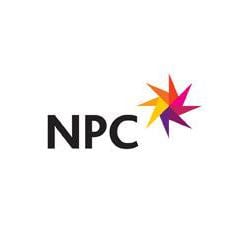
A guiding ethic at Markets For Good is to keep even the most theoretical discussions aimed at what we can actually do as we offer a wide-ranging set of voices in open discussion. Today’s post, by Sally Bagwell of NPC, travels that space in microcosm on the subject of donors, segmentation, and moving from proof to practice with better targeting of messages and activities.
…
When an idea comes along that can change how things are done, the first challenge is to prove that it’s a good idea. But perhaps the bigger challenge is encouraging people to act on it.
Research on both sides of the Atlantic now indicates that donors fall into distinct types (or segments) which give for differing reasons, and have different expectations of the relationships with the organisations they support. There are huge opportunities to increase giving if charities can better meet their donors’ needs; NPC’s Money for Good UK research identified an opportunity to increase overall giving by £665m annually, and to redirect £1.7bn of existing donations to charities who best meet donor needs. The research builds on the original Money for Good research conducted by Hope Consulting in the US, which investigated the opportunity to drive giving to the highest performing charities. The challenge now is to help charities act on the research findings and unlock these additional donations.
If charities can understand their donors better, and communicate with them in terms which match their interests, they can build relationships which are more rewarding for the donor, and more successful for the charity. In commercial industries, the concept of customer insight, based on attitude, is well established. However it has yet to gain widespread application in the charity sector. Some major fundraising organisations have had success with segmentations based on behaviour, although even this is difficult for smaller organisations, and attempts are often abandoned as too unwieldy and costly. And yet with charitable donations down by as much as 20% in the UK, and other income sources also precarious, there’s a clear incentive to try out new approaches.
Not everyone is convinced by this approach however. We’ve heard some cynicism from fundraisers who believe that donors don’t act with sufficient consistency or consideration to reward an investment in segmentation. Thankfully this view is not universally held! But it’s a valuable reminder that the bonds between donor and charity are often weak. More encouragingly, we’ve also heard a lot of enthusiasm from fundraisers who instinctively recognise the segments and believe that the findings can save numerous charities from investing individually in similar work.
But for all those who see the potential of this work, the question is the same; what happens next?
Firstly, there’s a big practical question about how the segmentation can be implemented across a database of supporters. Secondly, fundraisers are understandably cautious to invest heavily in unproven ideas. As an organisation promoting effectiveness in the charity sector, evidence is very close to NPC’s heart, so we are entirely sympathetic to this viewpoint.
Our solution is to work with fundraising charities to build the evidence base by piloting the segmentation. We plan to create an allocation tool based on a few key questions which will easily allocate donors to segments. This tool can be used in any forum where charities communicate with their donors; a thank you survey, an online quiz, or as a specific piece of research. We think the main application for this work will be for charities with large databases of donors, but some of the charities we’ve spoken to have also found the segments useful in framing their conversations with major donors.
We’ll be helping a number of charities to use the tool and to then test out different communications to their different donor segments to see if this increases fundraising yields. In line with NPC’s open-source philosophy, the allocation tool will be freely available for anyone to use, and we will encourage all charities to share their results with us—both good and bad. Drawing on this work and the conversations we’ve already had, we’ll also be developing practical guidance on how charities can implement the findings for themselves. We’re grateful to the Bill and Melinda Gates Foundation for development funding which allows us to begin this work.
We’re hoping that the combination of a great idea, a clear methodology for implementation and a solid evidence base will engage the fundraising community in the UK and help the Money for Good segmentation become part of the toolkit for fundraisers in all kinds of charities.
